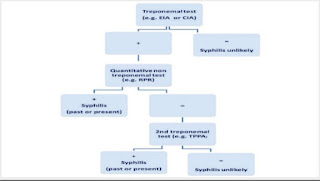🧠 Voiding Dysfunction in Children: What Every Radiology Resident Should Kno
🚽 Why It Matters
Pediatric voiding dysfunction is one of the most common but underappreciated referrals to pediatric radiologists. While most children with urinary incontinence don’t have an underlying anatomic abnormality, imaging can be the key to unlocking missed diagnoses, guiding treatment, and providing parental reassurance.
This blog post explores the embryology, neural control, clinical presentation, and radiologic approach to voiding dysfunction in children — so you, as a radiology resident, know when and what to look for.
🧬 The Embryologic Link: Why Bladder and Bowel Go Hand-in-Hand
During 4–6 weeks of gestation, the cloaca divides into the bladder (anterior) and rectum (posterior). This shared origin means:
Both organs are innervated by S2–S4 sacral segments
Dysfunction in one often affects the other
Constipation can worsen urinary incontinence
🔁 Think of it as a two-way street between rectal and bladder signals.
🧠 How Pee Works: Neural Control of Micturition
▶️ Filling Phase
Inhibitory signals from the brainstem (Barrington’s nucleus) keep the detrusor relaxed
Sympathetic nerves tighten the bladder neck
Pudendal nerves contract the external sphincter
⏬ Voiding Phase
Cortex tells Barrington’s nucleus to "release the brakes"
Parasympathetic outflow activates detrusor contraction
External and internal sphincters relax
🧪 If this coordination is off → dysfunction!
🚩 Red Flags in Clinical History
Not every child with wetting needs imaging. But here's when you should suspect anatomical causes:
🍼 Never achieved continence (think: ectopic ureter)
🔁 Constant dribbling
💥 Febrile UTIs or pyelonephritis
⚡ Sudden onset of incontinence after a dry period
📸 Imaging Tools in Your Arsenal
Ultrasound
First-line for kidney size, bladder wall, residual urine
VCUG (Voiding Cystourethrogram)
Essential for reflux, posterior urethral valves, spinning top urethra
MRI / MR Urography
Best for ectopic ureter and spinal anomalies (e.g., tethered cord)
Uroflowmetry + Post-void Residual (PVR)
Functional insight without radiation
📚 Radiology Signs You Should Know
Spinning top urethra → Detrusor sphincter dyssynergia
Thickened bladder wall + trabeculations → Chronic high-pressure voiding
Hydroureteronephrosis extending below bladder → Suspect ectopic ureter
Poor urethral visualization on VCUG in boys → Posterior urethral valves
💊 Why Imaging Helps Even When It’s Normal
Parents often seek answers. A normal study reassures them and supports behavioral therapy. But in difficult cases, imaging helps:
Rule out rare but serious anomalies
Confirm timing for interventions (like α-blockers or catheterization)
Show improvement (e.g., reflux resolution after therapy)
🧩 Case You Should Remember
A 7-year-old girl with:
Day/night wetting
Normal ultrasound
Good voiding logs
➡️ MR urography revealed a small dysplastic upper pole with ectopic ureter
➡️ Post nephrectomy + ureterectomy: She became completely dry.
📌 Lesson: Normal US doesn’t always mean normal anatomy!
🧠 Radiology Pearls
Imaging yield is low—but the stakes are high
Use imaging judiciously, especially after failed conservative therapy
Always correlate clinical score, history, and findings
Imaging isn't just diagnostic—it's therapeutic (for families)
📌 Final Thoughts
Voiding dysfunction in children is a multidisciplinary challenge, but radiologists play a crucial role in:
Ruling in/out anatomical causes
Guiding management decisions
Supporting long-term outcomes
🎯 As a radiology resident, understanding the who, when, and what to image will elevate your pediatric reporting from good to gold standard.
✍️ Written by Dr. Upasana | Radioglia
🎓 For more radiology tips, teaching cases, and imaging insights — follow @radioglia



Comments
Post a Comment